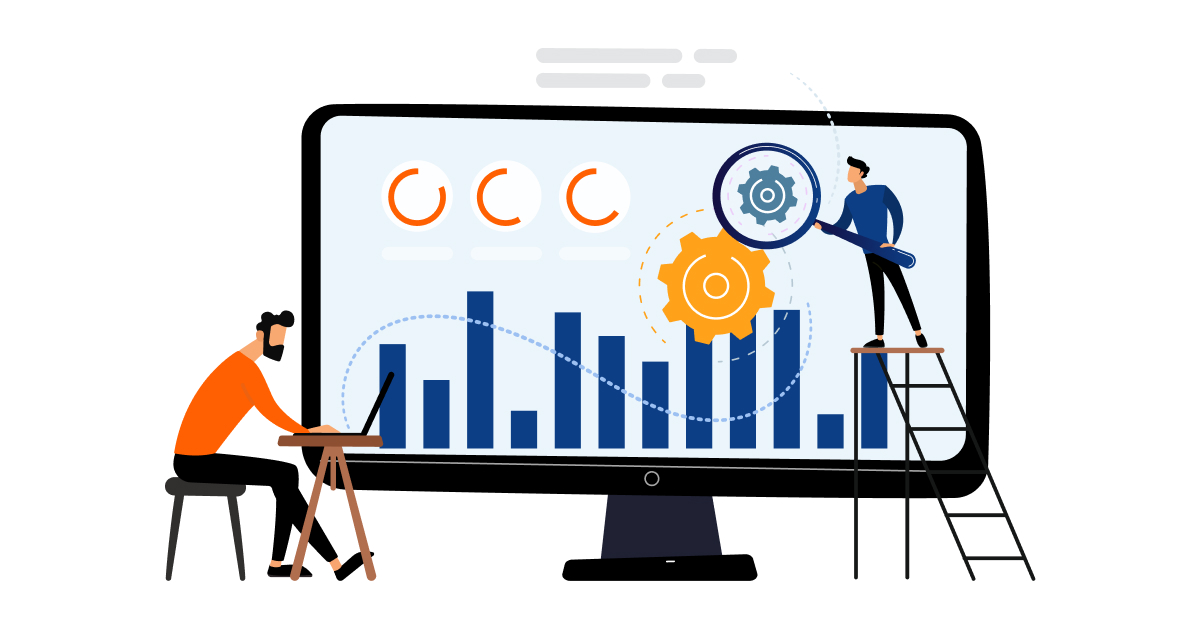
The COVID-19 pandemic has changed the world how it used to be. Since 2020, human life has changed, and how they work has also changed. Many businesses, such as tourism and travel, are gradually returning to their pre-COVID-19 working model.
However, Regarding technology and business, they are adapting to the new changes and working on the same. One of the significant changes is that corporations have moved to remote working, reducing the role of physical operations.
Organizations operating from remote locations have faced many challenges, such as monitoring remote employees and tracking their productivity. If you also find it challenging to monitor remote employees, you have landed at the right place. This article will discuss the seven most effective ways to monitor remote employees.
Table of contents
Monitoring Remote Employees – Meaning and Importance
Monitoring remote employees involves tracking employee productivity and how employees behave in the remote work model. Employee remote monitoring can be achieved using simple checklists, activity monitors, and more complex workforce analytics tools. Monitoring remote employees is considered crucial and beneficial for the organization. It helps maintain high productivity and helps maintain discipline among the team, and employees take their jobs seriously.
This stage is quite significant in monitoring remote employees. According to some studies, 84% of organizations monitor their employee’s system activity at work using desktop time-tracking software. Now that we have understood the importance of monitoring remote employees let’s look at the 7 most effective ways to do so.
7 Ways of Monitoring Remote Employees
1. Tracking Email Activity
Tracking employees’ email activity is crucial to ensuring their work occupancy, as Email is regarded as a reliable indicator. The observation indicates that individuals who send and receive more emails tend to be busier. Therefore, it is essential to access user behavior analytics; it helps determine how your staff uses company assets like emails.
Email Analytics assist you in syncing your employees’ email accounts and thus allows you to see how many emails they send and receive. It also includes details such as who their top senders and recipients are, their busiest hours and days of the week, average email response times, and more. Email analytics lets you immediately discover your team’s occupancy, such as who is the busiest.
2. Use Time-Tracking Software
Time tracking software is beneficial in monitoring remote employees as it helps track their productivity. It also helps to keep the team on track and encourages them to work according to the set timer, ensuring task completion on time.
Desktop time tracking software enables managers to check employee productivity using workforce analytics. It also assists in operational efficiency, as with a proper time management system, the company can filter out unproductive trends and work towards improving employee productivity.
3. Setting Goals and Deadlines
Setting clear goals and deadlines makes it easier for employees to align themselves with the organization’s aims, which helps managers in remote workforce management.
The company should align the goal and purpose with the relevance and potential of the employees so that they understand how to work according to the company’s expectations and can achieve the desired output within the given time.
Setting deadlines ensures that tasks are completed on time and helps direct employees’ attention to completing them. This time management technique enables you to monitor remote employees as they receive timely feedback.
4. Use of Technology
Technology helps monitor remote employees, especially after the shift towards a hybrid work schedule. Technological features such as user behavior analytics help track employee productive hours. It also helps increase workplace productivity by encouraging improved communication and collaboration between the manager and the team.
Leapmax, an employee time monitoring software, gives you a clear picture of your team’s productivity. Remote employees should also ensure they have appropriate internet connectivity so that work is not affected anywhere.
5. Self-Reporting
Maintaining trust within the team is a significant challenge while managing employees in a hybrid work schedule. This step is helpful since it allows for subjective analysis. Based on that, employees can also evaluate their productivity and balance their workload.
You can follow this activity in which you may ask your employees to write a quick email report to the manager or supervisor at the end of the day describing which projects they’re currently working on, how busy they are, and whether they feel capable of taking on new duties.
6. Use Task Management Application
Task management software is an excellent solution for monitoring remote employees more efficiently and effectively.
The task management software helps you to manage, organize, and assign tasks associated with various projects. Such applications benefit the time management system and enable the timer to keep track of work hours.
7. Subjective Analysis
Subjective analysis is essential for monitoring remote employees as it allows you to understand individual employee issues, particularly for employees who work from home, and for a good reason. Objective evidence is very trustworthy and straightforward to interpret.
However, you may wish to include some subjective assessments, particularly regarding staff morale. Pay close attention to how your employees behave in the office and use such indicators to determine their behavior in a remote workforce plan.
Conclusion
Managing remote employees is challenging; however, following the above points will help you deal with such situations. Time-tracking software such as Leapmax assists you in better remote workforce management.
The technical features that Leapmax includes, such as workforce analytics, help increase operational efficiency. So, do not worry. Follow the above pointers and monitor your employees efficiently!






